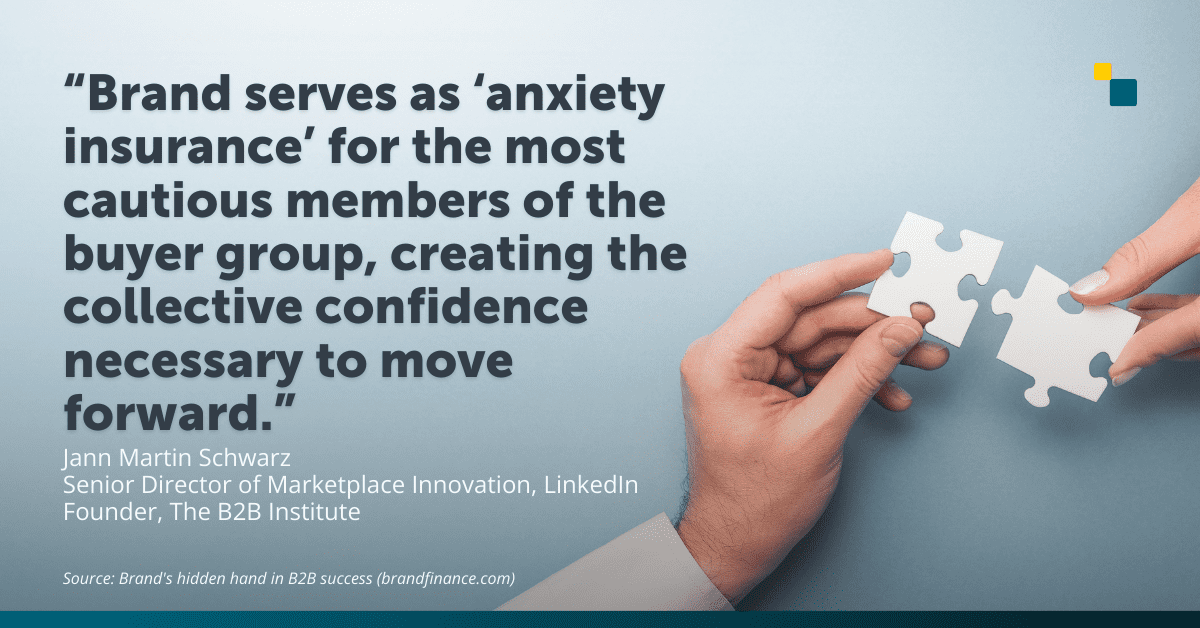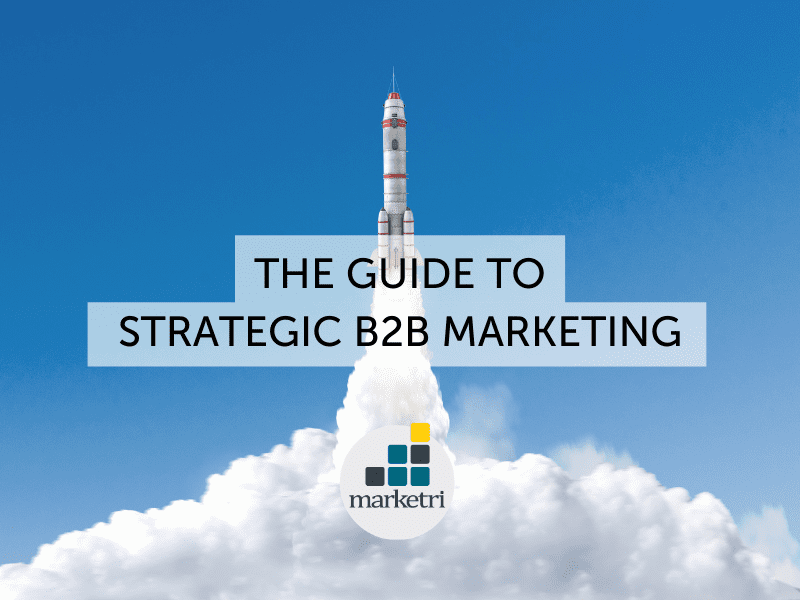Should I Invest in Branding or Sales? The False Choice That’s Limiting Your Growth
Every budget season, the same debate plays out in B2B conference rooms. Sales wants more reps, tools, and dollars. Marketing pushes for brand investment. The tug-of-war feels unavoidable.
But here’s the problem: choosing one at the expense of the other traps you in higher acquisition costs, slower cycles, and stagnant win rates—while competitors with stronger brands accelerate.
They’re not grinding cold lists. They’re on shortlists before RFPs are written. Buyers arrive at sales calls already convinced they matter. That’s not luck. It’s what happens when brand and sales work as one system.
Your 2026 decisions will either keep you in the trap or set you on a path to sustained, compounding growth.
Why It’s Not Either-Or
When budget pressure mounts, sales investment usually wins because the math feels straightforward. Hire more reps, get more meetings, close more deals. The attribution is clean, the timeline predictable, and results show up in quarterly reports.
But here’s what you get when all your energy flows into sales execution without brand support:
- Cold outreach drives up cost per opportunity and burns out teams.
- Reps spend valuable time explaining who you are instead of qualifying fit.
- Cycles lengthen as credibility must be earned call by call.
- Win rates stagnate against competitors with stronger positioning.
These may look like sales problems, but they’re often brand issues in disguise.
How Brand Changes the Equation
Strong brands change the sales equation by putting credibility into the room before the first call. Inbound opportunities arrive with context and intent, lifting conversion rates. Differentiation is clear in competitive comparisons. Campaigns, assets, and messaging all work harder under a trusted, recognized story to deliver compounding ROI over time.
Brand doesn’t replace sales—it amplifies it. And the data prove that out:
- A four-year BCG study across acquisition, cross-sell, and retention documented a 640% return on brand marketing.
- Forrester found that B2B buyers who know and trust a company are almost twice as likely to recommend that company or pay a premium to work with that company.
- Lucidpress (now Marq) reported that consistent branding across channels can increase overall growth by up to 20%.
- LinkedIn, Bain, and NewtonX found that at the start of B2B purchase processes, 81% of buyer groups said “everyone” or “almost everyone” already knew the brand they eventually chose. Only 4% bought something known solely to the recommender.

Measuring the impact of brand dollars
Data-driven executives often ask how soon they can start to see a return on their investment. Here are a few early indicators that an investment in brand is paying off, and how you can measure it:
- Branded queries are climbing. A steady uptick in branded keyword volume and share of search within 30 to 90 days signals growing brand awareness. Measure this by tracking branded keywords against a pre-investment baseline.
- Answer engine and AI surface visibility. Your brand appears in generative summaries and Q&A boxes for the topics you want to own. Record your presence weekly for a targeted set of terms.
- Direct traffic increases. More buyers are coming straight to your site rather than through generic searches. Watch direct sessions, homepage entry share, and repeat visitor growth in your search suite platform.
- Organic traffic decreases are slowing down. Given the fundamental change in search behavior over the past year, it’s no surprise that the vast majority of companies across all sectors and sizes are seeing their web traffic drop drastically. However, I still think traffic is a metric worth looking at—particularly if yours is rising, even marginally, in this environment.
- Conversion lifts on priority pages. Clarity and trust drive action. Look for higher click-through on value props, improved form completion, lower bounce, and deeper scroll depth on your top three pages.
Following those early wins, here are some of the stronger indicators that your long-term investment in brand is paying off:
- Inbound from ideal accounts accelerates. Demo requests and contact forms from your ICP grow as a share of total inbound. To measure this, monitor ICP match rate, qualification rate, and meeting acceptance in your CRM.
- Time to first meeting is faster. Brand trust is a driving force behind higher-stage conversions; put simply, prospects who already know your story move faster. Track days from first touch to first meeting and meeting set rate from website and brand-led campaigns.
- Discovery to demo and proposal to close improve. Keep an eye on your team’s win-loss notes for references to reputation, clarity, and proof as selection drivers.
- Communities and earned media get quality engagement. Mentions, invitations, and citations appear in the right forums, podcasts, newsletters, and industry roundups.
- Subscriber and owned audience grows. Newsletter sign-ups, event registrants, and community members increase with better retention. Track subscriber growth, open rate, and content completion.
- Sales productivity improves. Reps spend less time introducing the company and more time diagnosing fit. Watch meeting-to-opportunity conversion and ramp time for new sellers.
The IPA Bellwether report showed the first quarterly decline in marketing budgets in four years in early 2025. The stadium hasn’t gotten any smaller, but there are fewer players on the field. If ever there was a time to invest in branding, it’s now—because companies that invest today will own tomorrow’s market.
Your Next Move: Stop Choosing, Start Integrating
Stop treating brand and sales as competing line items. Integrated investment is the only way to build short-term pipeline and long-term market position.
At Marketri, we’ve helped dozens of mid-market B2B companies break this cycle with strategies that align revenue goals and brand strength. We bring strategic leadership, structured processes, and integrated execution that builds right-sized budgets aligned to both immediate revenue goals and long-term market positioning.
If you’re ready to stop choosing between brand and sales and start building systems that amplify both, let’s talk. Schedule a consultation.





